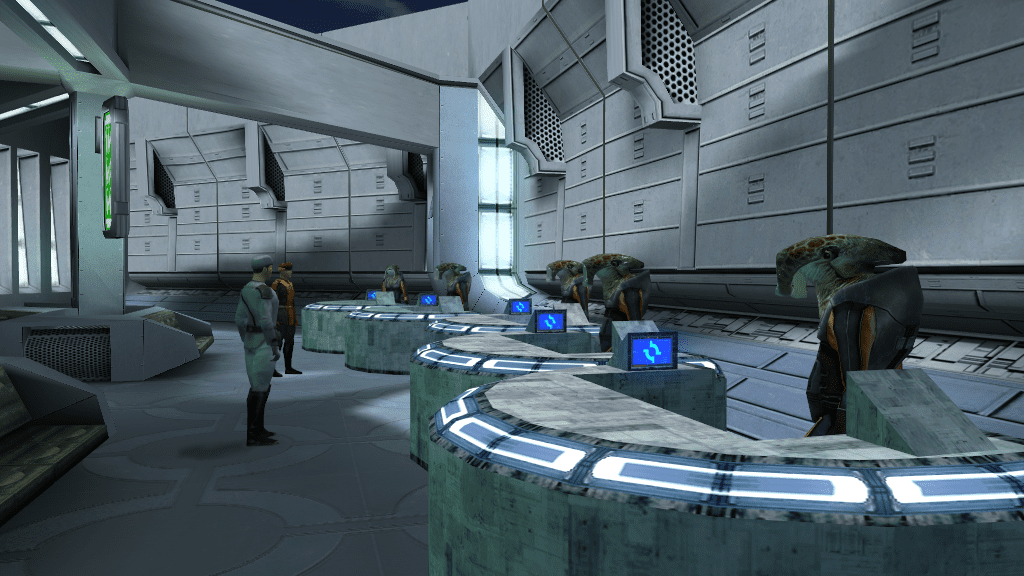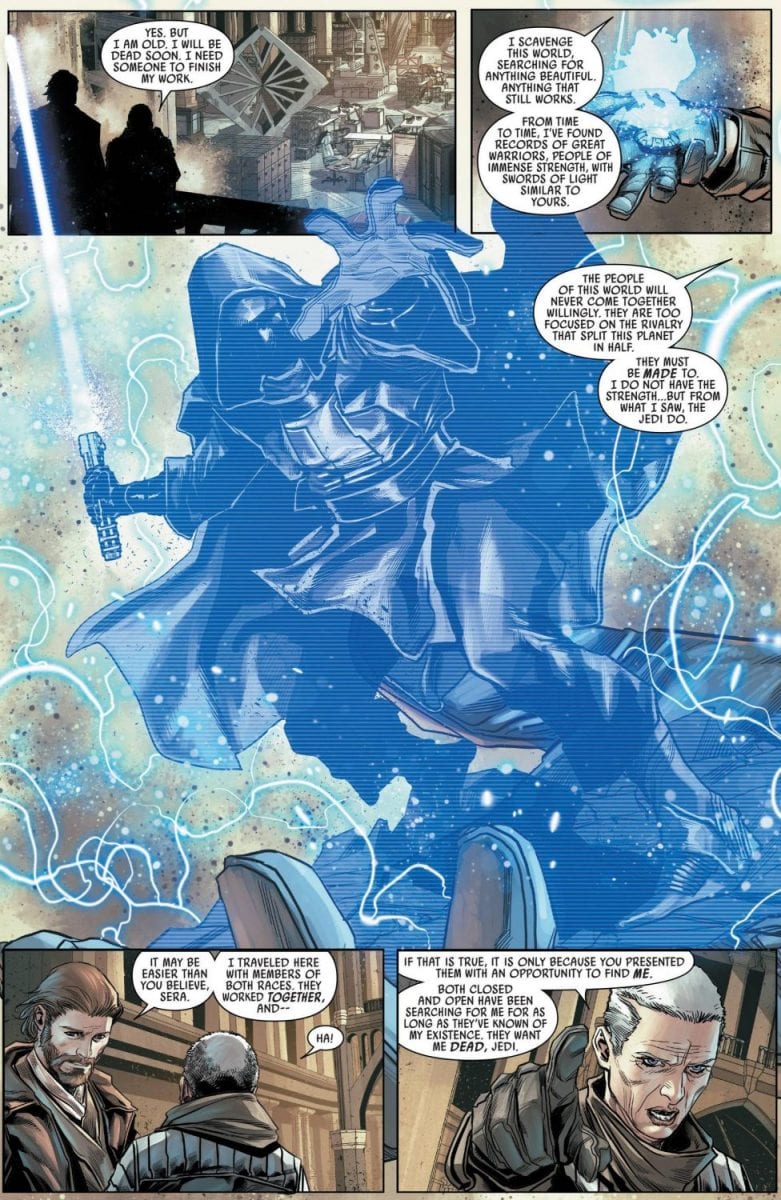Over the years since the new Star Wars canon arrived, a surprising amount of elements/lore from Knights of the Old Republic and we’re breaking them all down in one convenient spot!
[Update: Much has happened in the time since I initially published this handy guide for fans of Knights of the Old Republic! From new Easter eggs in The High Republic and even The Mandalorian, more of the game’s lore has weaved its way through the Star Wars canon.
With the confirmation that KOTOR is getting a full remake, now seemed like an excellent time to update this reference list with the new stuff. In an effort to keep this as a handy resource guide for others, I’ve gone ahead and placed the updates in the appropriate places mixed with the original article text.
Original Article was Published January 25, 2020.]
It should come as no surprise, but I’ve had Knights of the Old Republic on the brain a lot lately. From talking with KOTOR II‘s director for it’s anniversary the other month to recently going back and replaying them for the first time in years, I’m very much on a KOTOR high at the moment. Now there’s talk of a remake/sequel back on the table recently with the goal of making it fit into the current Star Wars canon. As such, this seems like the perfect time to look at some of the ways these classic games have been included in the new canon pretty much from the start!
A list of things the current Star Wars canon has managed to include from the old KOTOR games:

The Mandalorian Wars
Perhaps one of the biggest elements to make it into the New Canon (even though it’s still mostly undefined) is the existence of the Jedi/Mandalorian wars. In the game, it’s a crucial piece of backstory, that practically forms the basis for the entire plot.
Revan’s crusade against the Mandalorians is one of the primary factors in his fall to the Dark Side. Throughout the game we’re confronted with reminders of the war, the toll it exacted on the galaxy in general, and the lessons that should be learned from it. In the old KOTOR comics, the Mandalorian wars formed a major story arc. All around, it was considered and epochal event in the Star Wars universe.
It’s introduction into the Canon actually started during the earlier episodes of The Clone Wars (when the EU was still around) in 2010. The Jedi-Mandalorian conflict scorched the planet of Mandalore, making it nearly uninhabitable. It helped set the stage for the Deathwatch’s resentment towards the Jedi, leading into some fun episodes with Darth Maul and the Darksaber.
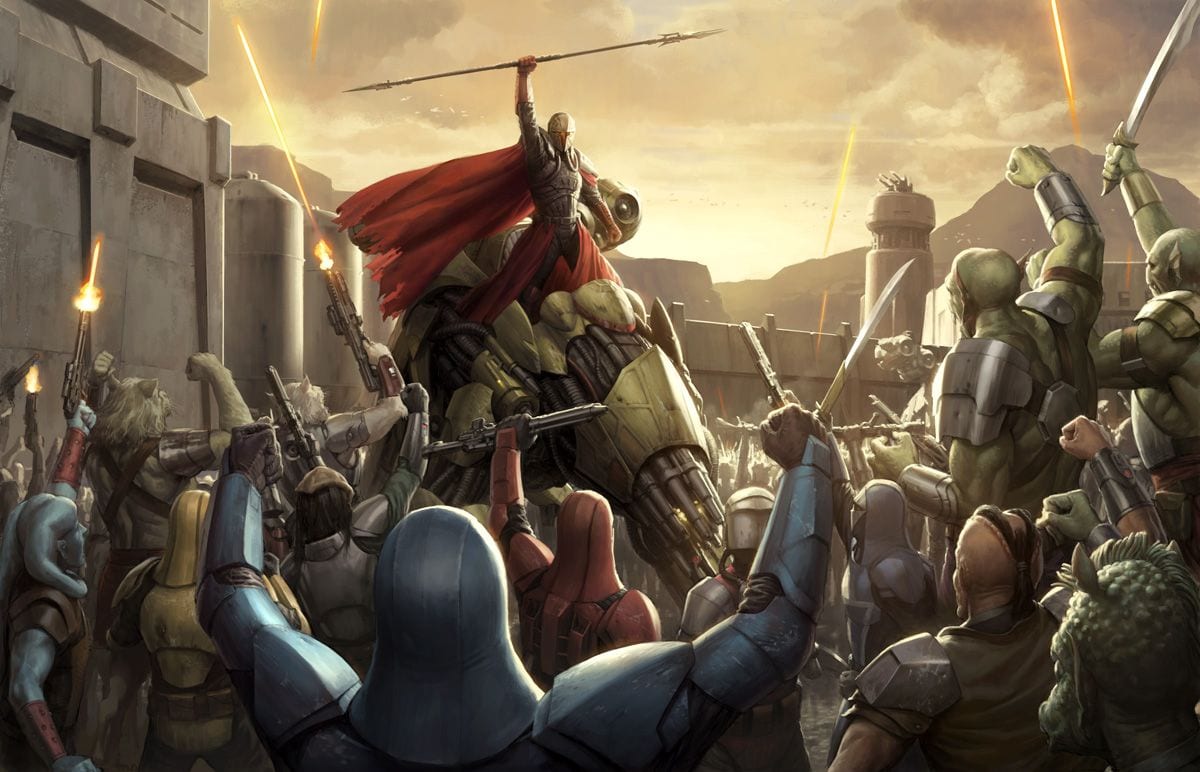
The Crusader Pendant
In The Last Jedi‘s Visual Dictionary, it explains the necklace artifact Luke has recovered and holds onto, is a Jedi Crusader Pendant (complete with Sith Lightsaber crystal). The Jedi Crusaders was the name given to the rogue band of Jedi who followed Revan in the Mandalorian Wars.
Star Wars Rebels expanded on this even further, giving us glimpses of the ancient conflict via artwork and statues. The show really leaned into the lore aspect of the conflict, making the connection to Knights of the Old Republic feel stronger than before.
The Disney+ series, The Mandalorian also made reference to the war as The Armorer explains the Yoda-Baby’s Force abilities to Din Djarin. It’s a small reference, but especially neat since it’s the first time we’ve really gotten a KOTOR nod in live-action. Something tells me we have the potential for more of this history to be explored down the road, as it’s become a more and more important historical point for the canonical Star Wars universe.
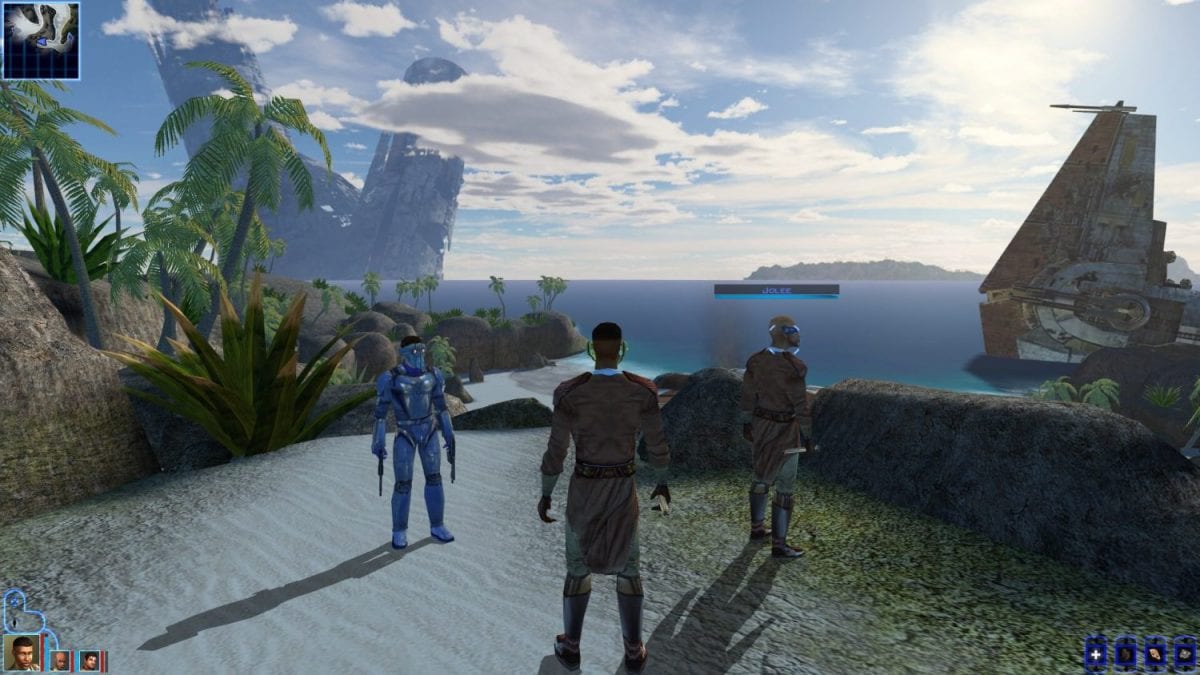
Locations
Rakata Prime – In Knights of the Old Republic, Rakata served as the home of the ancient (even by the time of KOTOR) race of “Builders” who enslaved the galaxy at one point. Their history is long and the source of a number of stories from the old Expanded Universe material, but for the game, they Rakatan people were the ones who created the Star Forge, the primary McGuffin in the first game. The culmination of the game’s plot comes to its climax on the planet of Rakata.
In canon, Rakata Prime…well…it hasn’t done much, despite being one of the earliest things re-canonized. It first made its appearance in The Force Awakens‘ Visual Dictionary; included as part of the new Galaxy Map, and fans of KOTOR took immediate notice. Since then, not much has been done with the location.

The only notable mention it’s gotten since 2015 was a mention by Venisa Doza in the Star Wars Resistance episode, “Rendezvous Point.” Prior to that, it got a mention in the Star Wars Adventures comic where former pirate, Tryki, was picked up by a First Order cruiser near the planet.
Considering the lore attached to the planet, it seems like such an odd/random early addition to the canon without having anything done with it. Perhaps it was included to sprinkle the seeds for future story potential….

Malachor (Malachor V) – the planet where the conclusion of KOTOR 2 takes place, where the treacherous Kreia lures us for a final confrontation. On top of being a locale steeped in the Dark Side (much like Korriban) Malachor is also the site of the Mass Shadow Generator, a terrible super weapon.
Daniel Wallace’s reference book, The Rebel Files, confirms the super weapon on Malachor from the show is also called the Mass Shadow Generator.
Malachor makes it’s big canon debut during the second season finale of Star Wars Rebels, “Twilight of the Apprentice.” On the fringes of known space, it houses an ancient Sith Temple and is clearly the site of a massive battle between the Jedi and Sith (kinda like in the game, except that battle was between the Mandos and Jedi). During an interview with IGN, Dave Filoni made the connections more extensive by confirming his version of Malachor also featured a super weapon, that just so happened to be crafted by an ancient woman….
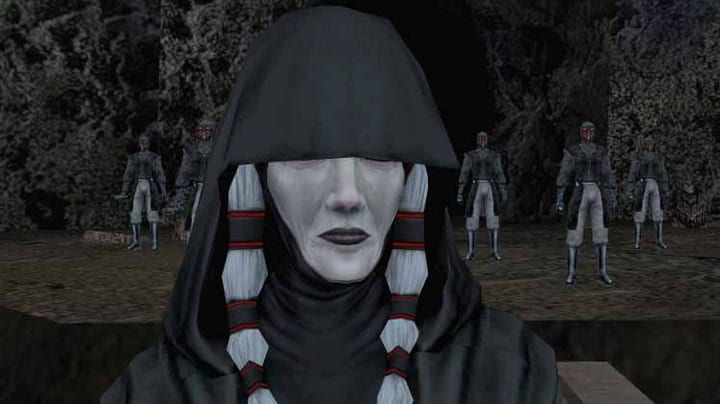
“I like the idea of this powerful, ancient woman that has domination that we’ve never heard of before, that was creating this massive weapon…And in the midst of the construction of this thing, when it was nearing completion, it got assaulted by ancient Jedi Knights. They have this huge battle at the foot of the temple, basically, and the weapon fires or malfunctions and everyone gets turned to stone.”
Of course, Filoni plays coy with revealing the powerful woman’s name, only confirming she was a Sith Lord. While a vast majority of fans are eager to see Revan in the Canon, there are some WILD stories that could be told with Darth Traya/Kreia included.
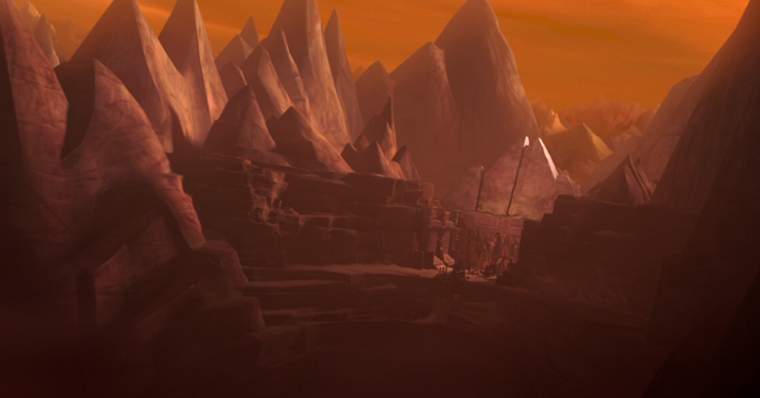
Korriban – While the notorious Sith planet/homeworld (though there’s debate on that) was first named in the old Tales of the Jedi comics, it really rose to prominence and become more known to fans thanks to it’s appearance in the Knights of the Old Republic games. The iconic location became synonymous with the Sith and the source of a lot of lore in stories to follow…Then it disappeared.
Well, not really, but the sixth season of The Clone Wars (which debuted on Netflix after the Disney merger) saw Yoda venture to Moraband, which became the Sith homeworld. I remember some fans gnashing their teeth about this change when it first came about, likening it to another change by George Lucas that saw the Mandalorians become a pacifist nation.
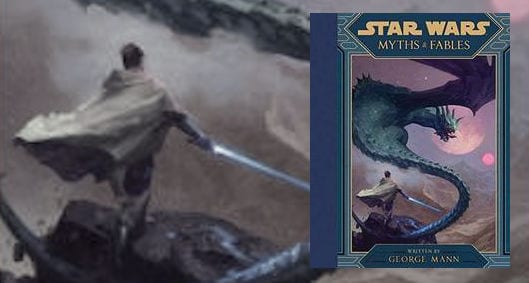
Lo and behold, however, Korriban has seen new life in the current Canon. Thanks to the Myths & Fables book (an in-universe series of short stories), we learn that Moraband and Korriban are in fact the SAME planet. The name Korriban was ultimately lost to time and became known to later generations as Moraband (and change further referenced in The Rise of Skywalker Visual Dictionary). It’s kind of a silly retcon, but makes for a really cool reference for fans of the game.

Taris – The city-world of Taris (similar to Coruscant) serves as the first major location in Knights of the Old Republic. It’s where you learn the ropes of the game, get a feel for the larger story, and meet your most prominent party members. As such, despite being only an introductory world, it holds a special place in many fans’ hearts.
While it got a mention in The Clone Wars, Taris entered the New Canon in the Tarkin novel (part of the first wave of New Canon books). Since then it’s had a number of appearances spanning the current Saga timeline, from the Aftermath novels, to Claudia Gray’s Bloodline. In Rogue One, one of the Senator’s during the big Rebel Alliance meeting that marks the start of the final act, the prominent senator Tynnra Pamlo, is from Taris.
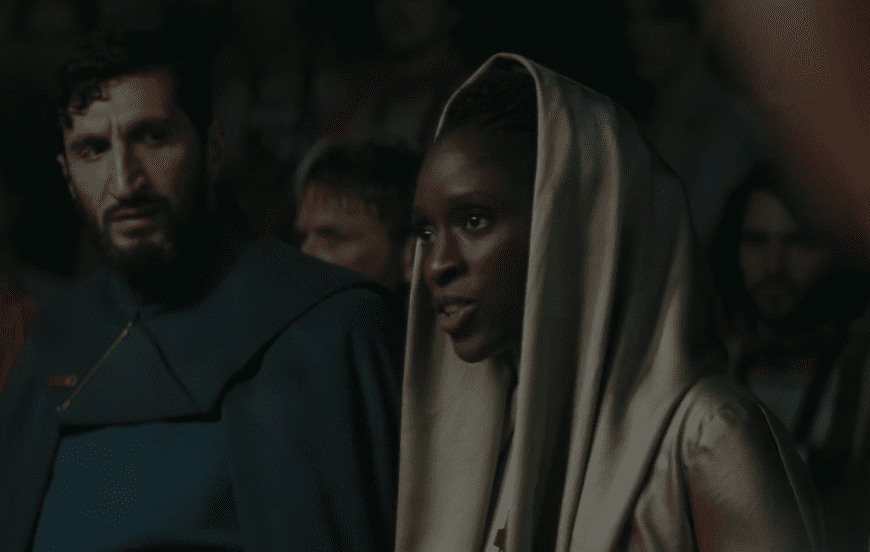
In Canon, much of Taris has remained the same. It’s still an ecumenopolis and there’s even reference to some sort of devastating event deep in its history that nearly destroyed the planet. One of the most iconic (and early) sequences in the game features the destruction of Taris at the hands of Darth Malak.
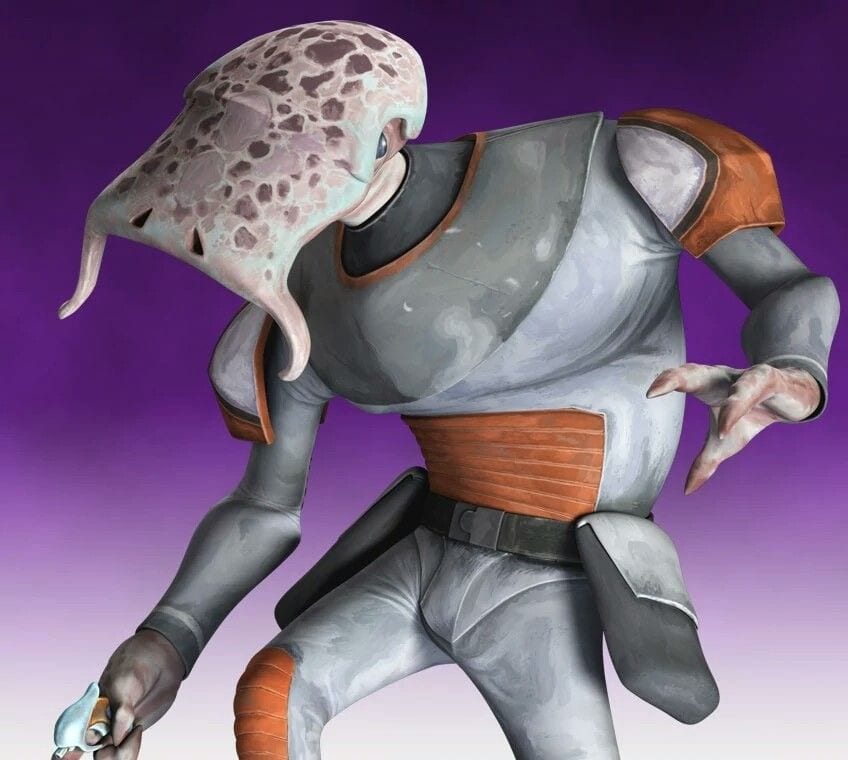
Minor Planets – Truly, just about every planet introduced in Knights of the Old Republic have made their way into Canon (if they weren’t already). Aside from the ones I’ve gone into above, for the most part they are only minor references, mentioned in passing and not really explored.
- Telos (IV): name-dropped in Catalyst: A Rogue One Novel.
- Manaan: The homeworld of the Selkath (and the species in general) was canonized during The Clone Wars and hasn’t really been referenced since.
- Onderon: The homeworld of Saw Gerrera and his sister Steela has pretty much stayed in canon since The Clone Wars, bringing much of it’s KOTOR II history along with it.
Selkath/Kolto – Speaking of Manaan, the Selkath and the planet’s primary export get a direct reference in The High Republic: Light of the Jedi. The Selkath are briefly mentioned as potential suspects behind the Great Disaster, due to the fact it nearly destroyed Hetzal. Hetzal is implied to be the origin of the healing substance Bacta, which is set to revolutionize medical care and recovery.
It’s mentioned that the Selkath could be involved in the Great Disaster since Bacta would be a direct competitor to their own medicinal industry with Kolto. In KOTOR, the Selkath are in control of the planet Manaan, which is where Kolto (the healing substance of THAT time) is harvested. While it’s not outright said, the implication is a clear reference to their history which originated in KOTOR.
Easter Eggs
Not everything that we’ve seen is a complete acknowledgement of events/characters/objects in the game. Some feel more like tantalizing Easter eggs. Things that could easily be explained away as something different if the needs be down the road, but are treats for fans who’ve played the games.

The Jedi Enclave? – Most recently, the penultimate episode of Star Wars Resistance‘s final season made a quick stop on Dantooine. As the Resistance forces on the planet were fleeing, we get a glimpse of the compound as they fly away…A compound that bears a striking resemblance to the Jedi Enclave from Knights of the Old Republic.
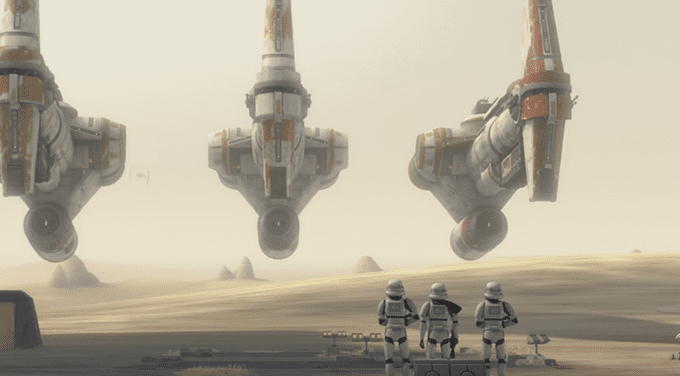
Hammerhead Corvettes – Star Wars Rebels brought the Hammerhead ships into the Star Wars canon as a series of ships being brought in to help bolster the nascent Rebellion’s fleet of ships. They’re old, but they don’t specifically say they’re from the KOTOR era either. As such, it’s mostly just a great Easter egg (that even pays off big time in Rogue One).
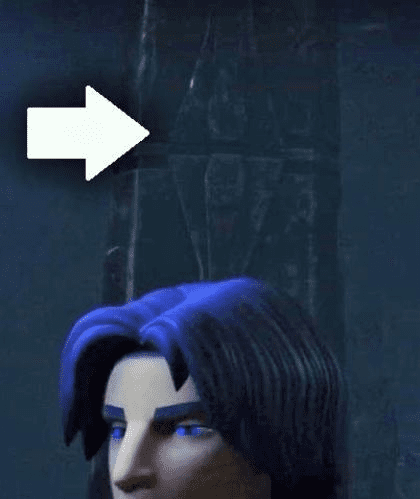
The Infinite Empire – In a blink and you’ll miss it moment during the same episode of Star Wars Rebels that features Malachor that we discussed earlier, you can see a symbol engraved in one of the pillars on the background. Look carefully and you can see it’s the symbol of the Star Forge/Infinite Empire.
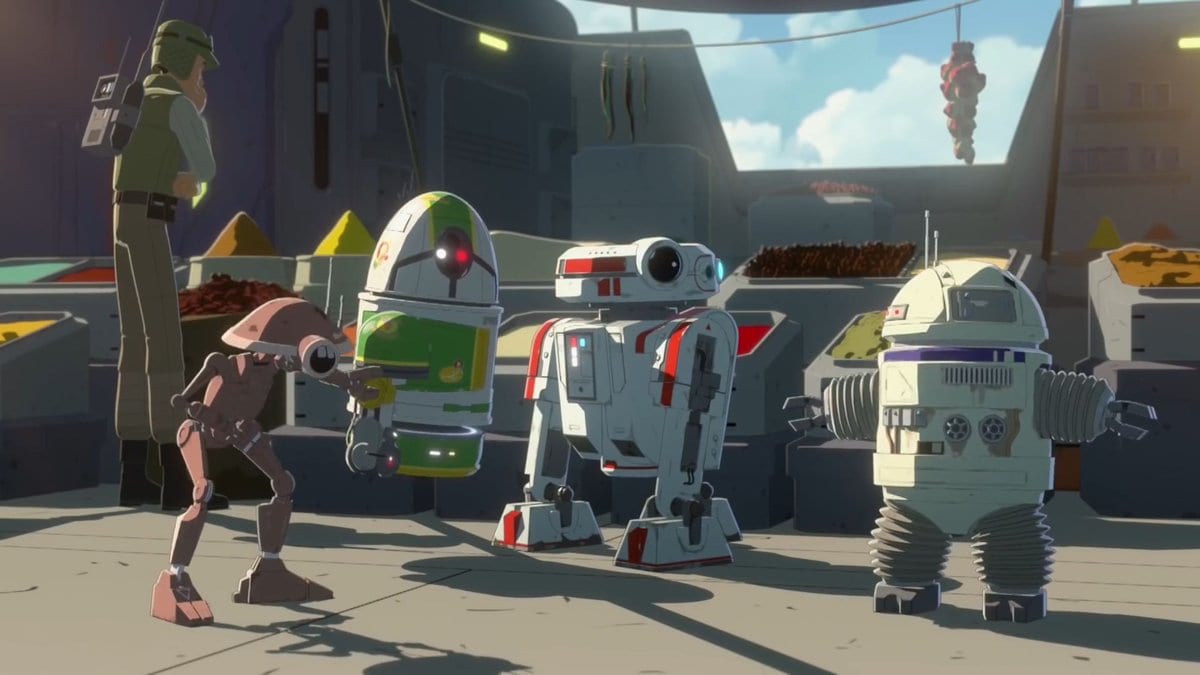
T3 – Star Wars Resistance featured a T3 modeled droid as part of the various background elements in the show.

Mr. Bones – The Aftermath trilogy of books features a rebuilt Battle Droid, lovingly called Mister Bones, that serves as a protector/companion to the antagonist, Temmin Wexley. The droid is a hodgepodge of parts and programming from a variety of droids designed to kill.
At one point in the first book, Bones glitches out, cycling through his personalities/programs and says, “COMMENTARY: I SAY WE BLAST THE MEATBAG AND SAVE YOU THE TROUBLE, MASTER.” This is a fairly obvious reference to the assassin droid HK-47 in KOTOR.
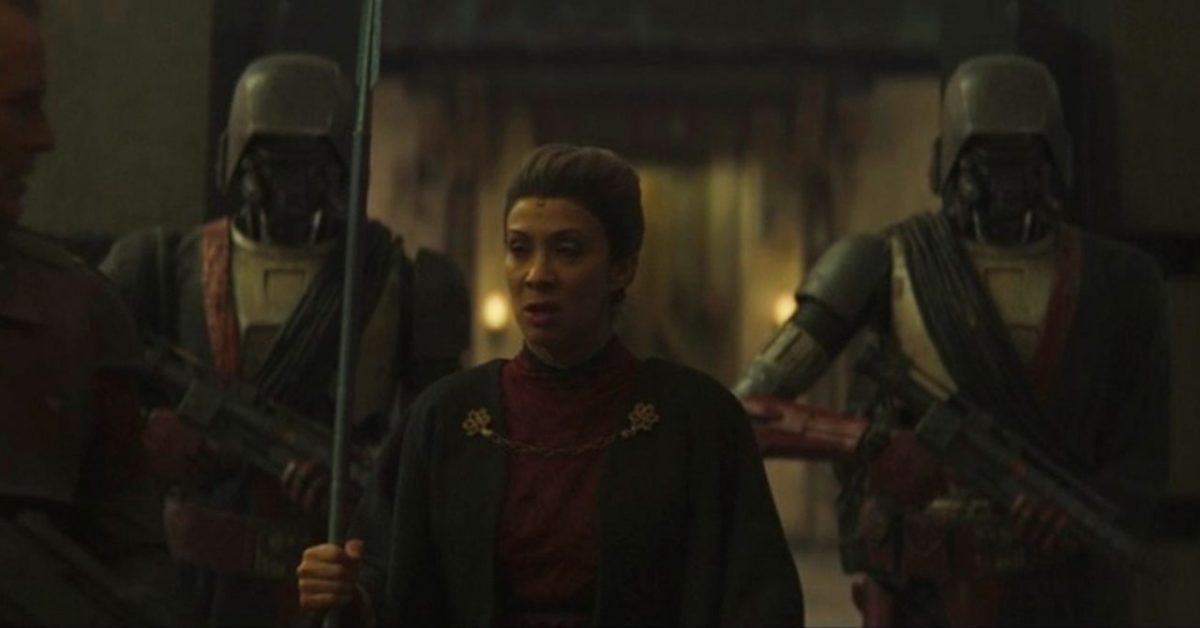
Morgan Elsbeth – Speaking HK-47, the second season of The Mandalorian made mention of the Hunter-Killer Assassin Droid series. In Chapter 13: The Jedi, we see a pair of HK-87s being used as guards by Morgan Elsbeth. A small connection, but cool nonetheless.
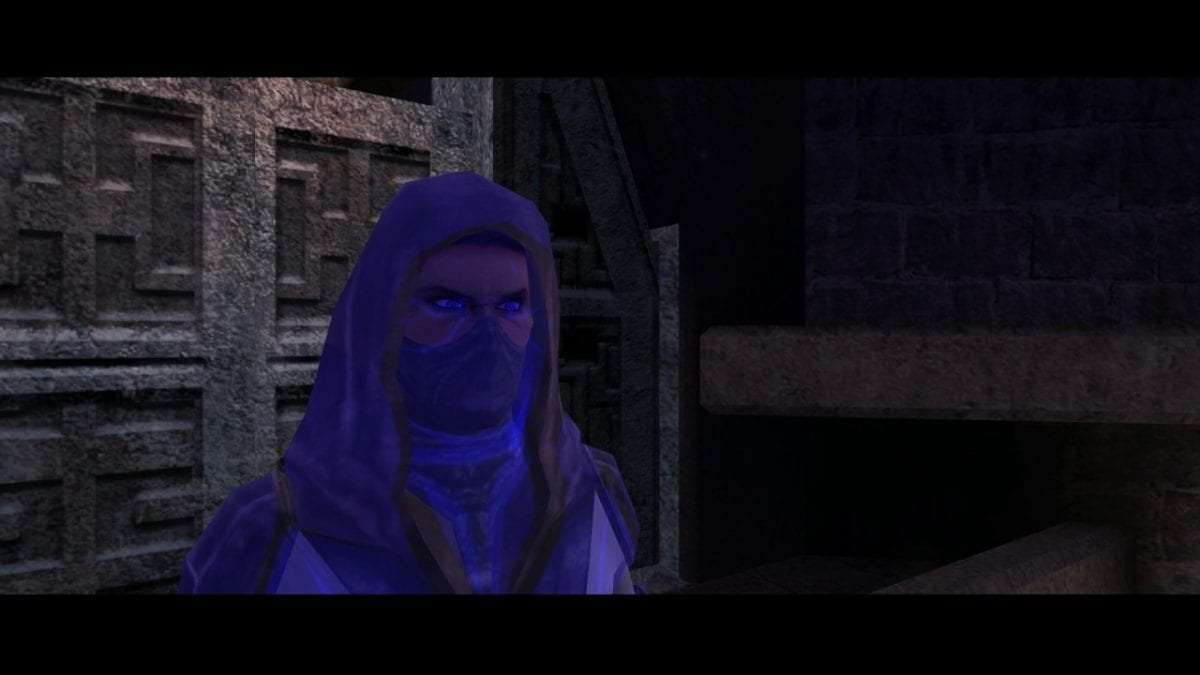
The 100 Year Darkness – Recent Canon comics, and Encyclopedia, make mention of the “100 Year Darkness” from which the Sith (as we know them) were born. There’s reference to a Rogue Jedi believed the Dark Side was the true path to power, which resulted in him being cast out. Him, along with his followers eventually became Sith Lords.
In Legends material, the 100 Year Darkness was kicked off by Ajunta Pall, a spirit you meet in KOTOR in front of his tomb on Korriban….
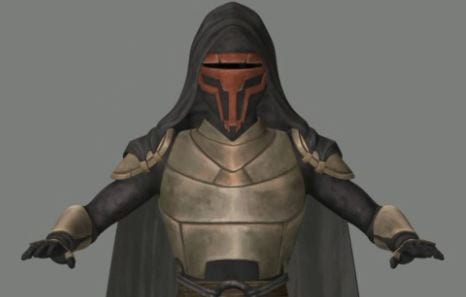
Revan – There have been a number of indirect references to the iconic character from the games. At one point Revan was supposed to appear in The Clone Wars, but the scene ended up on the cutting room floor. In the most recent Obi-Wan and Anakin comic mini-series, they see a hologram of an unnamed Jedi that bears a VERY striking resemblance to Revan.
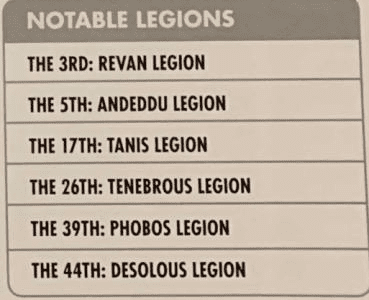
Most recently, The Rise of Skywalker Visual Dictionary at last directly referenced the character. The book reveals that the Legions of Sith Troopers hiding out on Exogol all have names that stem from ancient Sith Lords. One of them is the Revan Legion (plus several other names that will have EU fans drooling). While this obviously doesn’t canonize the entirety of their story, it’s neat to finally see the name definitively appear.
Ancient History – In The High Republic: Light of the Jedi, we get a direct mention (by Oppo Rancisis no less) of the “Great Sith War” which was originally named in the 90s Tales of the Jedi comics. There’s also mention of when the Order was down to just a handful of members (which we’ve seen in KOTOR II).
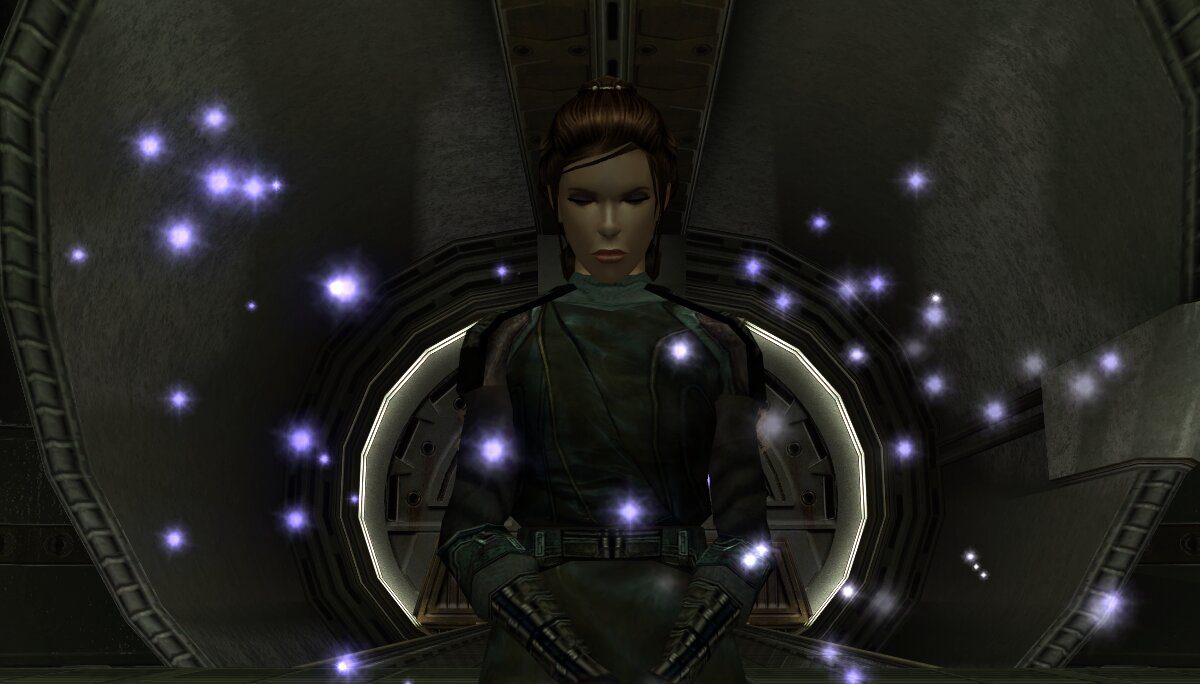
Battle Meditation – Though it’s not explicitly said, Avar Kriss’ unique skill in the Force (being able to unite with the minds of all the Jedi around and guide/direct the flow of things) is described and used exactly like the Battle Meditation skill original mentioned in the Knights of the Old Republic. Bastila Shan was famous for using the technique to help stop Darth Revan’s conquest, and it’s a skill that pops up in just about every story from that period of time in Legends. Cool to see that idea still around.
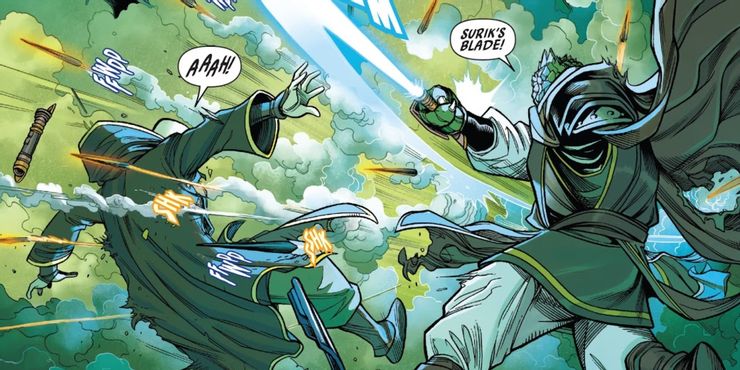
Meetra Surik – Going almost hand-in-hand with Revan’s journey, is that of Meetra Surik, otherwise known as The Exile. She served as the main player character in Knights of the Old Republic II, overcoming her exile from the Force/Jedi and working to defeat the Sith Lords threatening to take over.
In The High Republic comic #2, Jedi Master Sskeer used “Surik’s Blade” as an exclamation. While this doesn’t necessarily mean it refers to Meetra, it seems more than conicidence. Especially considering Surik was noted for driving her Lightsaber into the floor of the Jedi Temple in defiance of the Council exiling her. It seems her return to the Jedi Order following those events, and working to rebuild the Order following the “Dark Wars” has cemented her legacy among other Jedi.
Chiss – I might technically be cheating with this one, as it’s a reference to The Old Republic MMO, but since it deals with much of the same lore/stuff from KOTOR, I think it counts. Both of the Thrawn Ascendancy novels (prequels to Thrawn’s story in Rebels and other new novels) make mention of the Chiss involvement in Old Republic affairs. Specifically, the first novel, Chaos Rising, Thrawn mentions:
“The history of the Ascendancy is in these rooms, some of the pieces dating back to Chiss participation in the wars between the Galacitc Republic and the Sith Empire.”
The Chiss are one of many playable species in The Old Republic, so it’s pretty neat to see this become a part of their official history in the Canon.
As you can see, over the last several years, bits and pieces of the KOTOR lore have found their way into the New Canon. Whether it’s name-drops in books, whole pieces of history used, or iconic visuals getting used once again, there’s a surprising amount of those games that are considered “official” these days.
While I have no doubts that my list is incomplete (I haven’t read all the comics where objects have likely been referenced), these are the major elements KOTOR fans should be aware of. There have also been a number of Easter Eggs/direct references to other ancient Jedi/Sith lore that didn’t originate in KOTOR, so perhaps we’ll have to do another article to highlight those.
As Lucasfilm continues to move the franchise forward, I’m keeping my fingers crossed that all these small inclusions add up to a larger canonization of this incredible story. Notice something I missed? Be sure to let me know in the comments so we can get it added! What have been your favorite new Canon references to Knights of the Old Republic?

